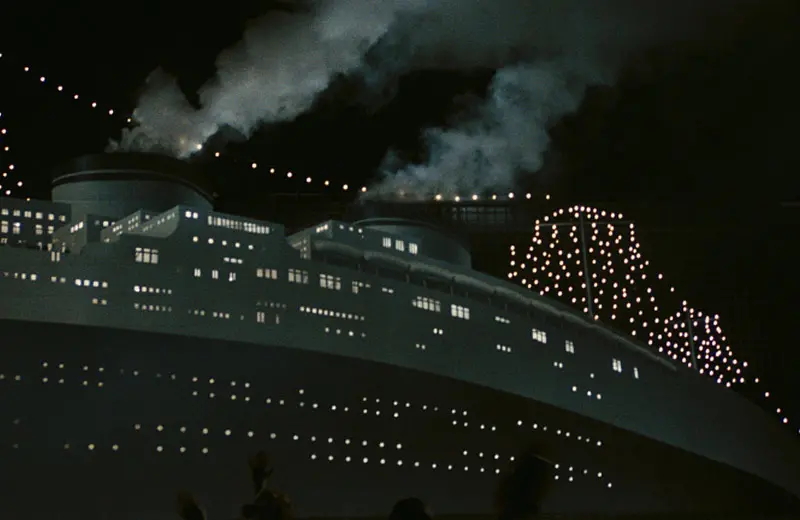

The Rimini evoked by Federico Fellini was created almost entirely at Cinecitta Studios: in particular, the church square which features in the opening shots of the film, when the “fogarazza” is lit to celebrate the arrival of Spring, and after the exceptional snowfall of the following winter when the snowbanks are taller than the inhabitants; here the residents pay their last respects to Miranda. The large square where the Fascist Youth perform their exercises is another set. Rimini’s train station was also built in Cinecittà for the scene where a high-ranking Fascist official comes to visit, which used the internal side of the studio entrance. Another Cinecittà construction was the ocean liner, Rex, although the dock where the inhabitants wait to go out to sea is actually in Fiumicino (RM). Real shots of the borgo include the areas of Ostia Antica (RM), in particular piazza della Rocca and the cemetery where Miranda is buried. At the end of the dance scene, Paradiso del Mare in Anzio (RM) – built during the Fascist regime as a casino although never actually used for purpose – serves as the exterior of Rimini’s Gran Hotel.
The Rimini evoked by Federico Fellini was created almost entirely at Cinecitta Studios: in particular, the church square which features in the opening shots of the film, when the “fogarazza” is lit to celebrate the arrival of Spring, and after the exceptional snowfall of the following winter when the snowbanks are taller than the inhabitants; here the residents pay their last respects to Miranda. The large square where the Fascist Youth perform their exercises is another set. Rimini’s train station was also built in Cinecittà for the scene where a high-ranking Fascist official comes to visit, which used the internal side of the studio entrance. Another Cinecittà construction was the ocean liner, Rex, although the dock where the inhabitants wait to go out to sea is actually in Fiumicino (RM). Real shots of the borgo include the areas of Ostia Antica (RM), in particular piazza della Rocca and the cemetery where Miranda is buried. At the end of the dance scene, Paradiso del Mare in Anzio (RM) – built during the Fascist regime as a casino although never actually used for purpose – serves as the exterior of Rimini’s Gran Hotel.

F.C. Produzioni, P.E.C.F
Federico Fellini recalls his infancy in the 1930s at the height of the Fascist regime in a Rimini inhabited by unusual, unique characters and enlivened by popular feast days, the nocturnal appearance of the ocean liner Rex and the passage of the Mille Miglia vintage car rally.